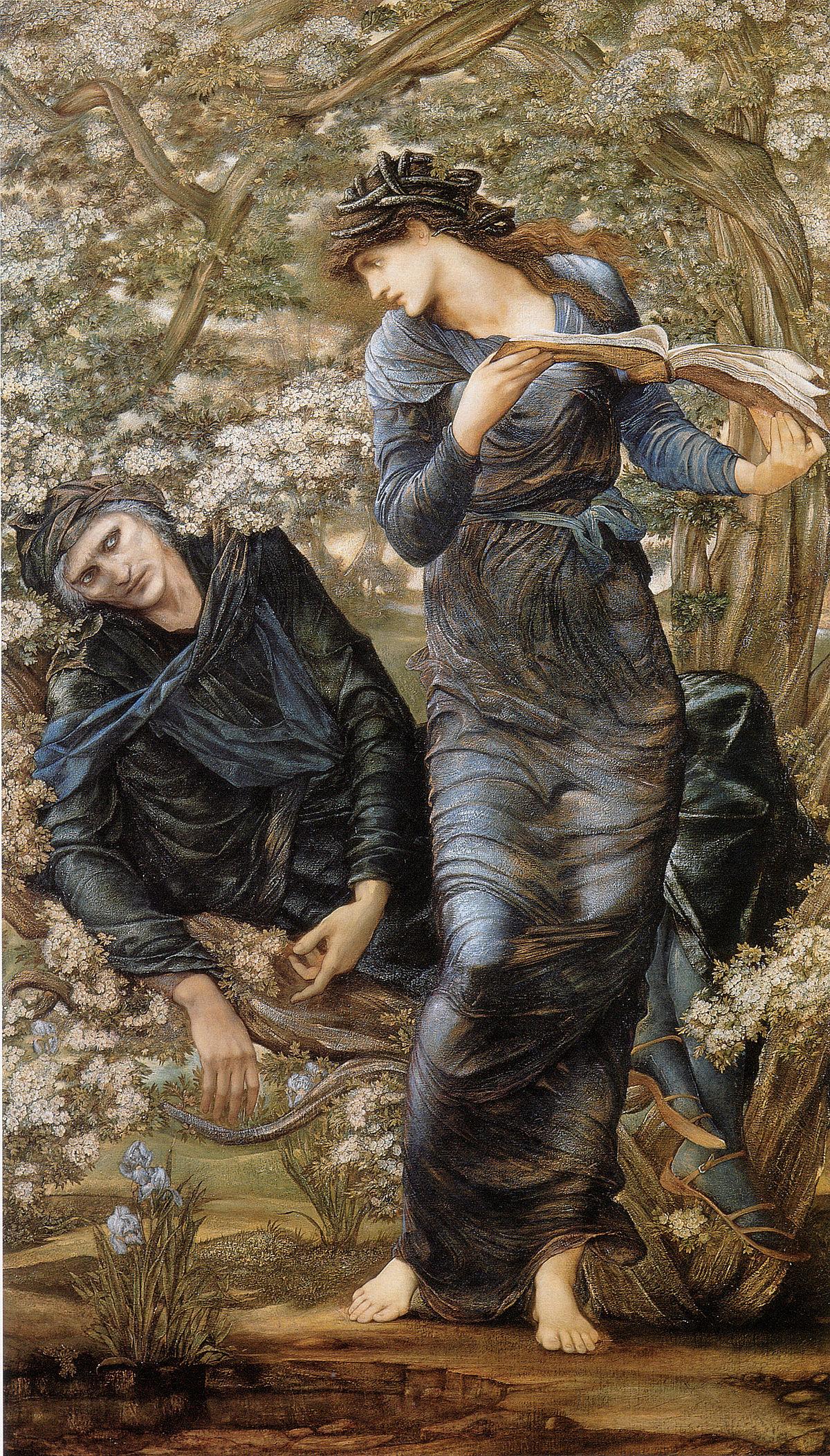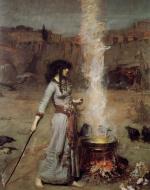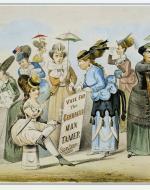Created by Marissa Minor on Thu, 11/11/2021 - 14:52
Description:
Introduction:
“My Last Duchess” is a dramatic monologue in which a Duke is telling the messenger of his potential future wife about his previous wife’s passing. In this poem, the Duke reveals common beliefs in society during the Victorian Era that women are objects to be controlled, possessed, and then thrown away when there is no more use. In this exhibit, focus will be placed on the Duke’s former wife specifically - and women’s roles during this time period and how it impacted their livelihood due to the patriarchal society they lived in. The Duke’s former wife’s character is revealed in the monologue through the Duke’s story to the messenger and plays a crucial role in the presumed way a typical woman lived during the Victorian Era.
Michael Miller uses the “My Last Duchess” monologue to explore the Duke’s jealous nature and possessive qualities in his article, “Browning’s “My Last Duchess.”” According to Miller, “the Duke’s account of the presence of the spot of joy in the portrait does not condemn his Duchess to a moral position tending to excuse his actions toward her, but instead reinforces the poem’s greatest achievement: the delineation of an ego…” (Miller 33). The idea of male superiority is infused into the personal beliefs of the Duke as well as many other male Victorian’s in that time period leading to the struggle of patriarchy and women’s fight for human rights and power in society. Miller also examines the social aspects of Victorian life as a way to argue that the Duke’s ego is not only self-fed but encouraged by society as well. In relation to the attention that the last Duchess received, Miller reveals, “given the poem’s social milieu, such verbal liberties with a Duke’s wife would be unthinkable unless some encouragement prompted them” (Miller 32).
The images below explore the idea of Victorian women gender roles in Victorian society as it relates to patriarchy, sexuality, and feminism. Each of the illustrations are from painters in the 18th century to early 19th century, and includes propaganda as well as a drawing book that was common for women in the 18th century.
Works Cited
Browning, Robert. “My Last Duchess.” 1842. Cove Studio, Cove, https://studio.covecollective.org/anthologies/engl-2101-01-british-literature-ii-fall-2021-smith/documents/my-last-duchess-0dbefae9-dcdc-46e2-97a2-a54cdab9e422.
Miller, Michael G. "Browning's MY LAST DUCHESS." Explicator, vol. 47, no. 4, 1989, ProQuest, https://ezproxy.lib.uconn.edu/login?url=https://www-proquest-com.ezproxy.lib.uconn.edu/scholarly-journals/brownings-my-last-duchess/docview/1290258516/se-2?accountid=14518.
Images in the Series
Fig. 3. Burnes-Jones, Edward. "The Beguiling of Merlin." Daily Art Magazine, https://www.dailyartmagazine.com/victorian-feminists/
In this painting by Edward Burne-Jones, it is based on "the Beguiling of Merlin", a cautionary tale because Nimue refuses to become Merlin’s lover until he teaches her sorcery and magic, but yet when he does, she uses her newfound powers against him and starts a cycle of events that destroy Camelot. In this painting, Merlin is lying helplessly while Nimue towers above him. Her figure completely overbears that of Merlin, showing her superiority in the painting. However, in this painting, Nimue also has snakes running through her hair- which could be in reference to the mythological being, Medusa. It’s easy to see in the painting that the idea of women with knowledge is dangerous here, and is seemingly harmful to society. This painting sums up a common Victorian patriarchal argument: that women should remain weak and submissive because women’s intelligence is a hindrance to society. This image closely relates to the theme of power seen in “My Last Duchess” because the Duke feared the instability he had in his marriage and his failed attempts to “tame” and control her. Just as this painting depicts Nimue as seductive, the Duke attempts to portray his former wife in the same light. The Duke shows this overwhelming sense of insecurity in his monologue when he says, “Too easily impressed; she liked whate’er she looked on, and her looks went everywhere” (Browning 23, 24). Both Jones and Browning’s Duke Ferrera argue with the idea that a patriarch is needed because women and wives need to be dominated in order for men to maintain their authority.
Fig. 2. William Waterhouse, John. "The Magic Circle." Daily Art Magazine, https://www.dailyartmagazine.com/victorian-feminists/
This image was painted by John William Waterhouse in 1886, known as The Magic Circle. Many of Waterhouse’s paintings depicted women as mysterious and in a mythical form because Waterhouse was deeply inspired by the ideas of a “dangerous” woman, also known as femme fatale. This idea of femme fatale challenges class structure as well as typical Victorian gender roles. Waterhouse also often depicted women from literary sources as well, and in these paintings the idea is that dangerous women are commonly found in the world. But in this painting, Waterhouse centers the scene around a woman who’s standing in front of a cauldron and drawing a protective circle around her with a staff. The sorceress also holds a sickle in her right hand, with crows in front and back of her to represent life and death. In Greek Mythology, Zeus used a sickle to castrate Kronos and become king of the gods. There is speculation that Waterhouse paints the woman with a sickle in her hand in order to suggest the result of women having power and authority - Waterhouse essentially argues that symbolic castration is a world without patriarchy. Duke Ferrera’s excessive pride and high rank explains this idea that men in the Victorian era had in relation to social castration in a society without patriarchy and female intelligence. The Duke was obsessed with totalitarian power and believed everyone should submit to his authority just as women should submit to men by not educating themselves.
Fig. 1. Currier & Ives. The NY Times, https://www.nytimes.com/2018/07/25/arts/design/rebel-women-museum-of-the-city-of-new-york.html
This is a piece of artwork from 1869 called “Age of Brass: or the Triumphs of Women’s Rights'' and was published by Currier & Ives. The painting depicts women lining up at the ballot box to vote, as well as a man at the end of the line holding a baby. The artwork’s political statement is made very clear: to defy the typical gender roles of a Victorian woman. The Victorian ideal of “true womanhood” developed later in the mid-nineteenth century urged piety, purity, submissiveness, and domesticity. These four paragons of a “perfect” Victorian woman revolve around the woman being the center of the family because she’s the “light of the house.” In this cult, women belonged to a separate sphere from men. At the end of the line, the man holding the baby provides a very distinct counter argument in regards to patriarchy: women do not always belong in the household and deserve to hold equal power to men. In the context of the man holding the baby in this art, a rejection of toxic masculinity can be seen. Duke Ferrera’s toxic masculinity leads him to the problem of communication, language, and jealousy within his marriage. His power in his marriage comes from his position of authority, in which he is the Duke; a powerful, patriarchal male that ranks above the Duchess. However, this instilled sense of authority leads him to madness - hence obsessing over control over the Duchess by overanalyzing actions like the simple, lighthearted blush.
Fig. 2. Heckle, Augustin. The British Library, https://www.bl.uk/romantics-and-victorians/articles/gender-roles-in-the-19th-century
The photo above is a picture of a Bowles’s Drawing Book For Ladies, which is a manual for drawing or embroidering flowers. Both drawing and embroidery were essential parts of a Victorian woman’s conventional female education in the 18th and 19th century. However, in contrast, the education of men in the Victorian era focused on language and literature of Ancient Greece and Rome, math, philosophy, and history. Education in a woman's life most revolved around fitting the domestic role of a Victorian woman in that era. Women would have classes in laundry, home management, needlework, etc. Women’s schools were also very small and the importance of school leaned more on the active role they would play when eventually living with a family. Women were also expected to soften themselves, and women known as “blue-stockings” were women who devoted themselves too much to intellectual pursuits. "Blue-stockings" were considered unfeminine because they usurped a man’s natural intellectual superiority. When Oxford and Cambridge had later opened their doors to women, many families did not allow their daughters to attend for fear the daughter would later be unmarriageable. This idea of femininity and male superiority is also seen in “My Last Duchess” as it relates to the physically controlling nature of the Duke as the Duchess’s portrait is hidden behind curtains, only to be seen by those he chooses to show. Women's education was stifled and silenced and was only available to women as a means of entertaining a man's needs in the family. In the Duke's mind, women are just ornamental objects and is implied heavily in the poem. Browning's depiction of the patriarch and the struggle it provided to women is also seen in every part of Victorian society as a whole - whether it be education, or family life.





